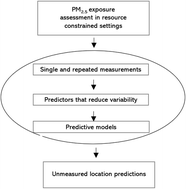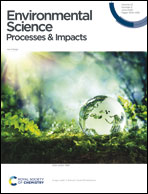Predictors of urban household variability of indoor PM2.5 in low socio-economic communities
Abstract
In epidemiological studies, levels of PM2.5 need to be estimated over time and space. Because of logistical constraints, very few studies have been conducted to assess the variability within and across homes and the predictors of this variability. This study evaluated within- and between-home variability of indoor PM2.5 and identified predictors for PM2.5 in homes of mothers participating in the urban Mother and Child in the Environment birth cohort study in Durban, South Africa. Thirty homes were selected from 300 homes that were previously sampled for PM2.5. Two measurements of PM2.5 levels were conducted in each home within a 1 week interval in both warm and cold seasons (four samplings per home) using Airmetrics MiniVol samplers. A linear mixed-effect model was used to evaluate within- and between-home variability and to identify fixed effects (predictors) that result in reduced variability. The PM2.5 levels in the 30 homes ranged from 2 to 303 μg m−3. The within-home variability accounted for 94% of the total variability in the log-transformed PM2.5 levels for the 30 homes. The fixed effects extracted from the repeated samplings in the present study were used to improve a previously developed multivariable linear regression model for 300 homes, and thereby increased the R2 from 0.50 to 0.54. Inclusion of fixed-effects in multivariable linear regression models resulted in a reasonably robust model that can be used to predict PM2.5 levels in unmeasured homes of the cohort.

- This article is part of the themed collection: Environmental exposure and impacts


 Please wait while we load your content...
Please wait while we load your content...